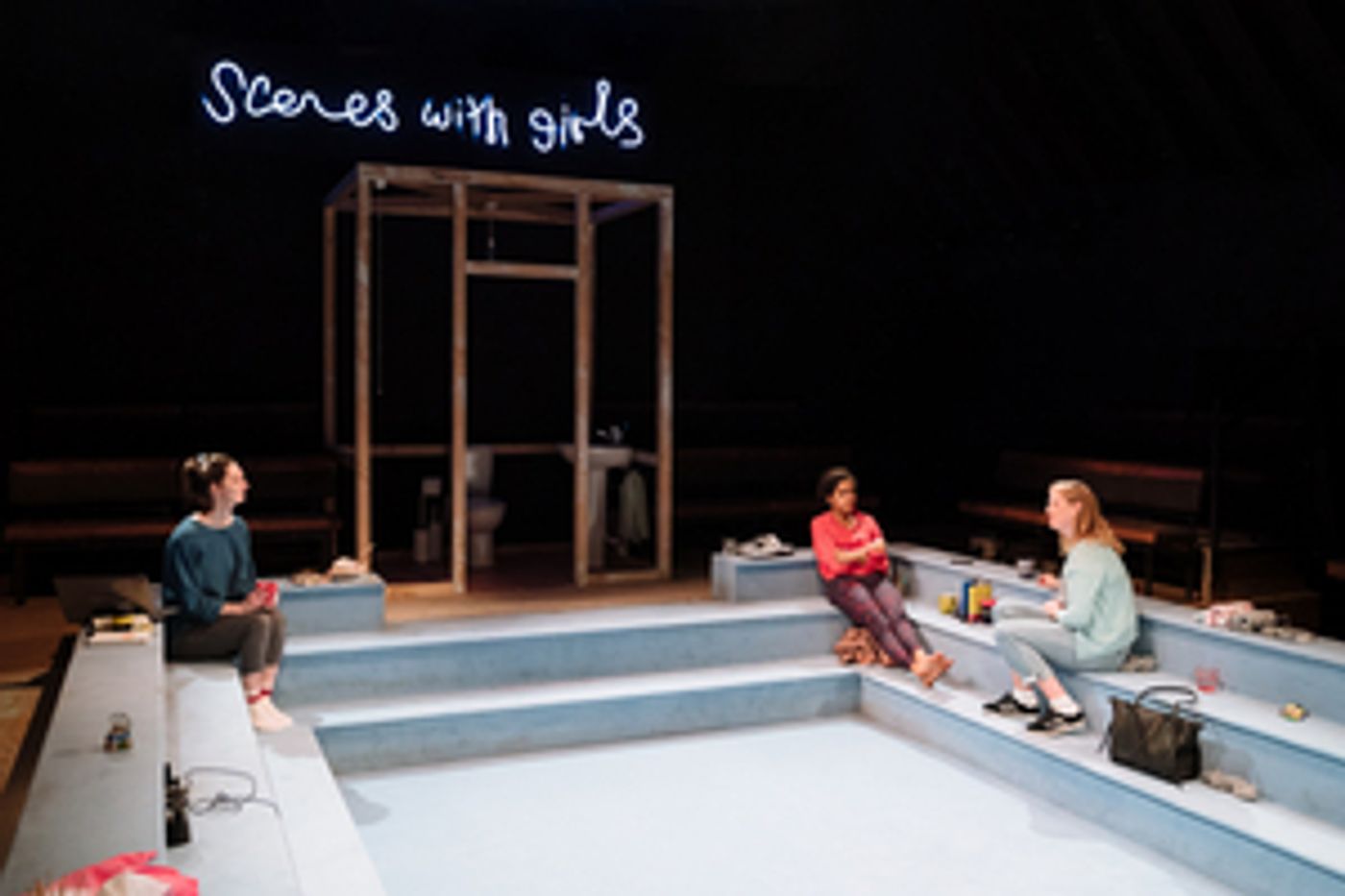Review: SCENES WITH GIRLS, Royal Court

![]() "It was human tapioca." An unusual way to describe a party, perhaps, but a stickily accurate one. That's just one of many effective lines in Miriam Battye's Scenes with girls at the Royal Court. Knowing references, squeals of delight and animated gestures confirm the hilarious familiarity shared between Tosh and Lou as the two dissect said party, and from there audiences are quickly drawn into their comfortable space.
"It was human tapioca." An unusual way to describe a party, perhaps, but a stickily accurate one. That's just one of many effective lines in Miriam Battye's Scenes with girls at the Royal Court. Knowing references, squeals of delight and animated gestures confirm the hilarious familiarity shared between Tosh and Lou as the two dissect said party, and from there audiences are quickly drawn into their comfortable space.
Tosh (Tanya Reynolds) and Lou (Rebekah Murrell) are flatmates. Together, they want to "deprogramme" themselves from the societal expectation that their self-worth is determined by boys, a narrative that they say many are "addicted" to. Take Fran (Letty Thomas), who was once part of this group - she's now living with her boyfriend. Across 22 scenes, the lives of these 'girls' are shown, their unsteady confidence threatening to overspill at any point.
Naomi Dawson's design attests to the openness shared between Tosh and Lou: a rectangular forum that dips into the ground leaves the characters with nowhere to hide. Likewise, the frame of a bathroom area stands at the back of the stage, but there are no doors or walls. It's obviously revealing, but invasively so, especially as the characters argue: these should be, one feels, private conversations, yet here they are. Unfiltered. Unfettered. Unpredictable.
Rebekah Murrell's Lou crackles with energy as she works through the various ideologies and social connections that she feels that dictate her life - this is a woman forever either contributing to the narrative or being made aware of how she is in danger of doing so. From that arises an uncertainty.
Tanya Reynolds brings a more unusual tone to the show, yet her portrayal of Tosh presents both the façade worn by the character and the hairline fractures that allow brief moments of uncertainty to slip through. Reynolds grapples with the open imagination of both Tosh and Battye's writing well, describing the character's unusual, hyper-sexual dreams with a knowing absentness.
Meanwhile, Letty Thomas's Fran adds a third, unassuming voice to Battye's duet. Off-hand jokes and dry puns might fall flat amongst her friends, but Thomas's habits endear her to the audience.
There's an impressive confidence to Scenes with girls, which is complemented by the connections shared between the actors. From the comical opening to the more contemplative scenes, some of which involve barely any dialogue, Lucy Morrison's direction allows the actors to breathe. Murrell and Reynolds have a superb chemistry, which is shared often not through dialogue but minute touches or brief glances.
Nao Nagai's lighting is also effective, with a neon sign bearing the show's title at the top of the set that flickers as these lives clash and change.
Battye strikes the perfect tone throughout that balances humour with contemplation. Tosh and Lou never lecture, and their flaws are demonstrated. The two are over-reliant on each other, especially when it comes to articulating their beliefs: sentences are shared between the two, muddying their thoughts.
Though the play moves in predictable ways, it's entertaining and interesting from start to end. It's also pleasingly complete, with references and situations described early on in the play returned to with wit and for effect. But at the same time Battye refuses to pin anything down, and audiences will leave questioning both the characters and themselves.
What emerges in Scenes with girls is an echo chamber of love and frustration. Across its tight 80 minutes, audiences are presented with a dramatic bricolage that pushes at the boundaries of modern love and friendship in all its ugliness and its quiet simplicity. It's one narrative that we should listen to.
Scenes with girls is at the Royal Court until 22 February
Photograph credit: Helen Murray.
Reader Reviews
Videos

